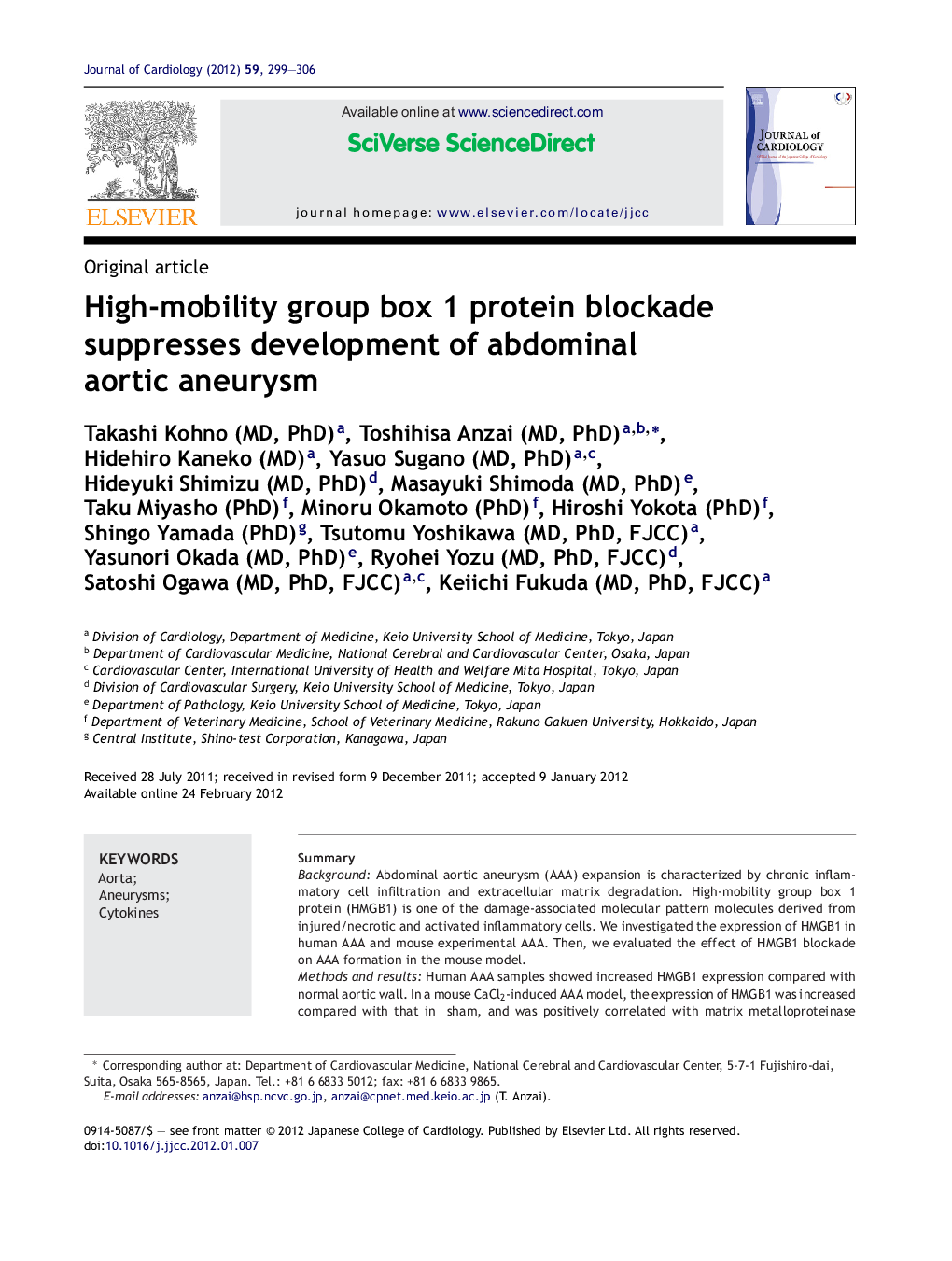| Article ID | Journal | Published Year | Pages | File Type |
|---|---|---|---|---|
| 2963517 | Journal of Cardiology | 2012 | 8 Pages |
SummaryBackgroundAbdominal aortic aneurysm (AAA) expansion is characterized by chronic inflammatory cell infiltration and extracellular matrix degradation. High-mobility group box 1 protein (HMGB1) is one of the damage-associated molecular pattern molecules derived from injured/necrotic and activated inflammatory cells. We investigated the expression of HMGB1 in human AAA and mouse experimental AAA. Then, we evaluated the effect of HMGB1 blockade on AAA formation in the mouse model.Methods and resultsHuman AAA samples showed increased HMGB1 expression compared with normal aortic wall. In a mouse CaCl2-induced AAA model, the expression of HMGB1 was increased compared with that in sham, and was positively correlated with matrix metalloproteinase (MMP)-2 and MMP-9 activity. We administered neutralizing anti-HMGB1 antibody (AAA/anti-H) or control antibody (AAA/C) to AAA mice subcutaneously every 3 days for 6 weeks. Treatment with neutralizing anti-HMGB1 antibody suppressed AAA formation, and attenuated elastin fragmentation. HMGB1 blockade markedly reduced the number of macrophages and MMP-2 and MMP-9 activity in aneurysmal tissue. The mRNA level of tumor necrosis factor-α and CD68 in the aorta was reduced in AAA/anti-H compared with AAA/C.ConclusionsElevation of HMGB1 level in aneurysmal tissue was observed in human AAA and mouse experimental AAA. HMGB1 blockade in a mouse AAA model reduced AAA progression, in association with reduced infiltration of macrophages and MMPs activity. These findings suggest a significant role for HMGB1 in the pathogenesis of AAA.
